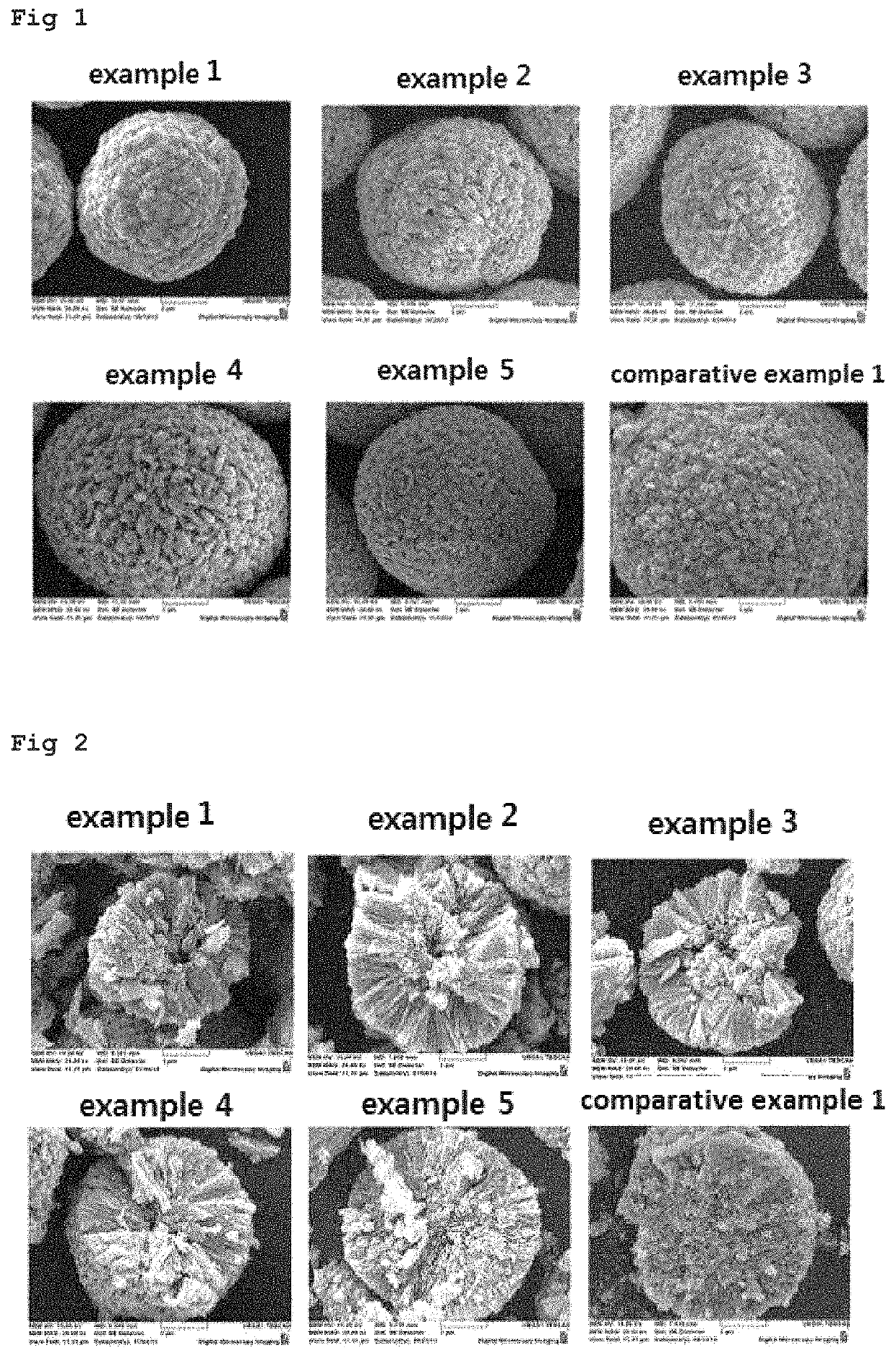Cathode active material for lithium secondary battery and lithium secondary battery comprising the same
a cathode active material and lithium secondary battery technology, which is applied in the direction of batteries, cell components, electrochemical generators, etc., can solve the problems of significant deterioration of thermal properties, deterioration of lifespan characteristics, and still has thermal stability problems, so as to facilitate the storage of lithium ions into and release of primary particles, the effect of capacity, output and lifespan characteristics of the battery including the cathode active material
- Summary
- Abstract
- Description
- Claims
- Application Information
AI Technical Summary
Benefits of technology
Problems solved by technology
Method used
Image
Examples
example 1
[0035]As the first step, 20 L of distilled water and 1000 g of ammonia as a chelating agent were introduced into a co-precipitation reactor (output of rotary motor: 80 W or more) having an internal volume of 100 L and stirred at from 300 to 1000 rpm using the motor while maintaining the internal temperature of the reactor at from 40 to 50° C.
[0036]As the second step, a 2.5 M aqueous solution of the first precursor prepared by mixing nickel sulfate, cobalt sulfate, and manganese sulfate at a molar ratio of 80:20:0 and a 28% aqueous ammonia solution were continuously introduced into the reactor at a rate of 2.2 L / hr and 0.15 L / hr, respectively. In addition, in order to adjust the pH, a 25% aqueous solution of sodium hydroxide was supplied thereto so that the pH was maintained at from 11.3 to 11.4. The impeller speed was adjusted to from 300 to 1000 rpm. The aqueous solution of the first precursor, ammonia, and the aqueous solution of sodium hydroxide were continuously introduced into ...
example 2
[0041]The powder of a cathode active material was produced by the same method as in Example 1 except that the composition of the inner core layer was Li(Ni0.70Co0.30)O2 and the composition of the outer shell layer had a continuous concentration gradient from Li(N0.70Co0.30)O2 to Li(Ni0.4Co0.2Mn0.4)O2.
example 3
[0042]The powder of a cathode active material was produced by the same method as in Example 1 except that the composition of the inner core layer was Li(Ni0.80Co0.20)O2 and the composition of the outer shell layer had a continuous concentration gradient from Li(Ni0.80Co0.20)O2 to Li(Ni0.35Co0.35Mn0.3)O2.
PUM
| Property | Measurement | Unit |
|---|---|---|
| aspect ratio | aaaaa | aaaaa |
| thickness | aaaaa | aaaaa |
| temperature | aaaaa | aaaaa |
Abstract
Description
Claims
Application Information
 Login to View More
Login to View More - R&D
- Intellectual Property
- Life Sciences
- Materials
- Tech Scout
- Unparalleled Data Quality
- Higher Quality Content
- 60% Fewer Hallucinations
Browse by: Latest US Patents, China's latest patents, Technical Efficacy Thesaurus, Application Domain, Technology Topic, Popular Technical Reports.
© 2025 PatSnap. All rights reserved.Legal|Privacy policy|Modern Slavery Act Transparency Statement|Sitemap|About US| Contact US: help@patsnap.com



